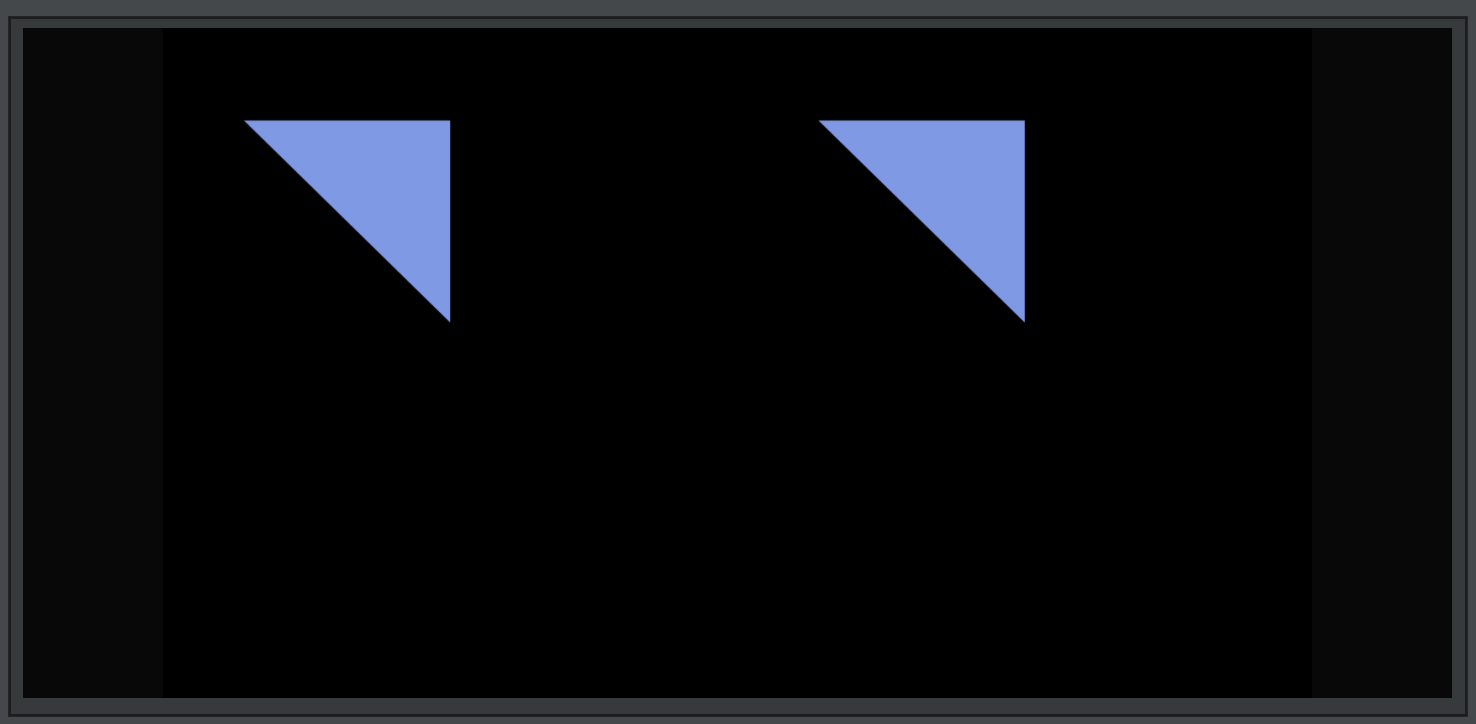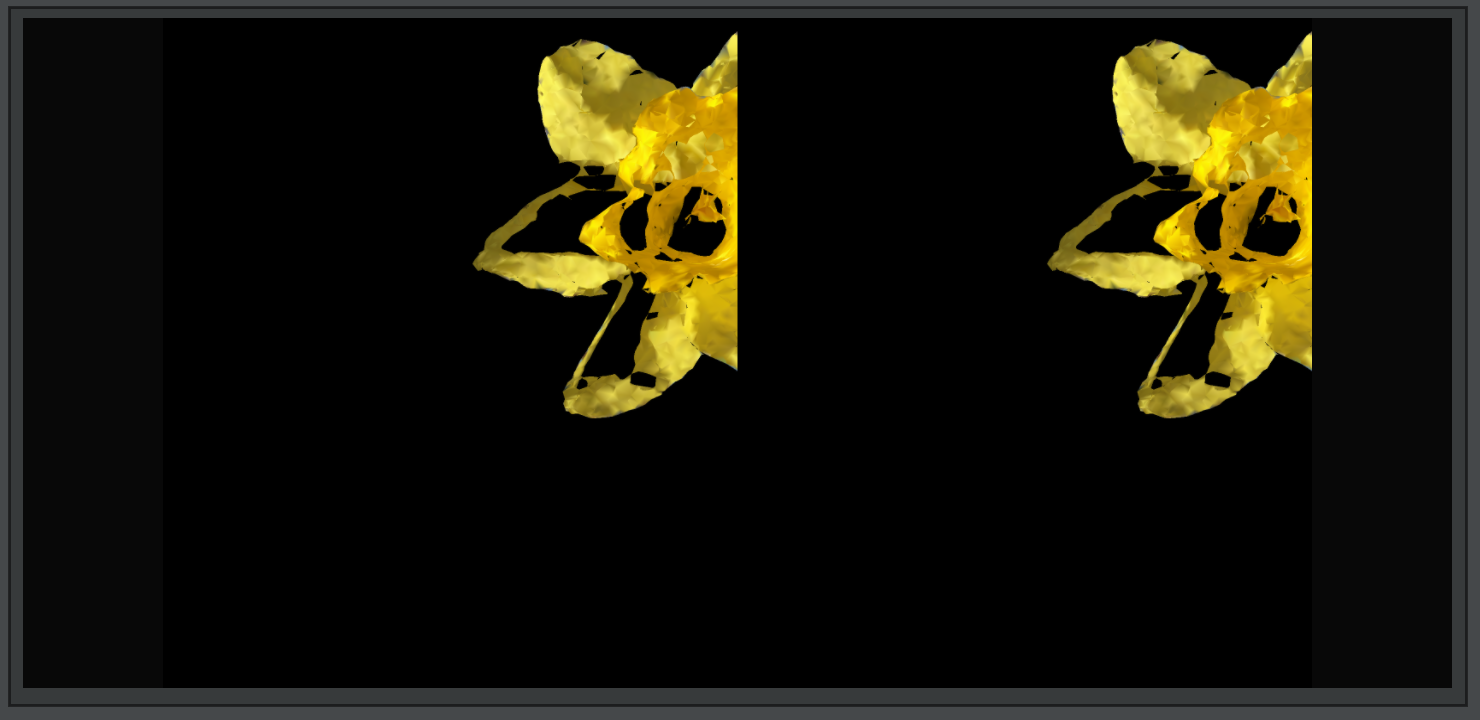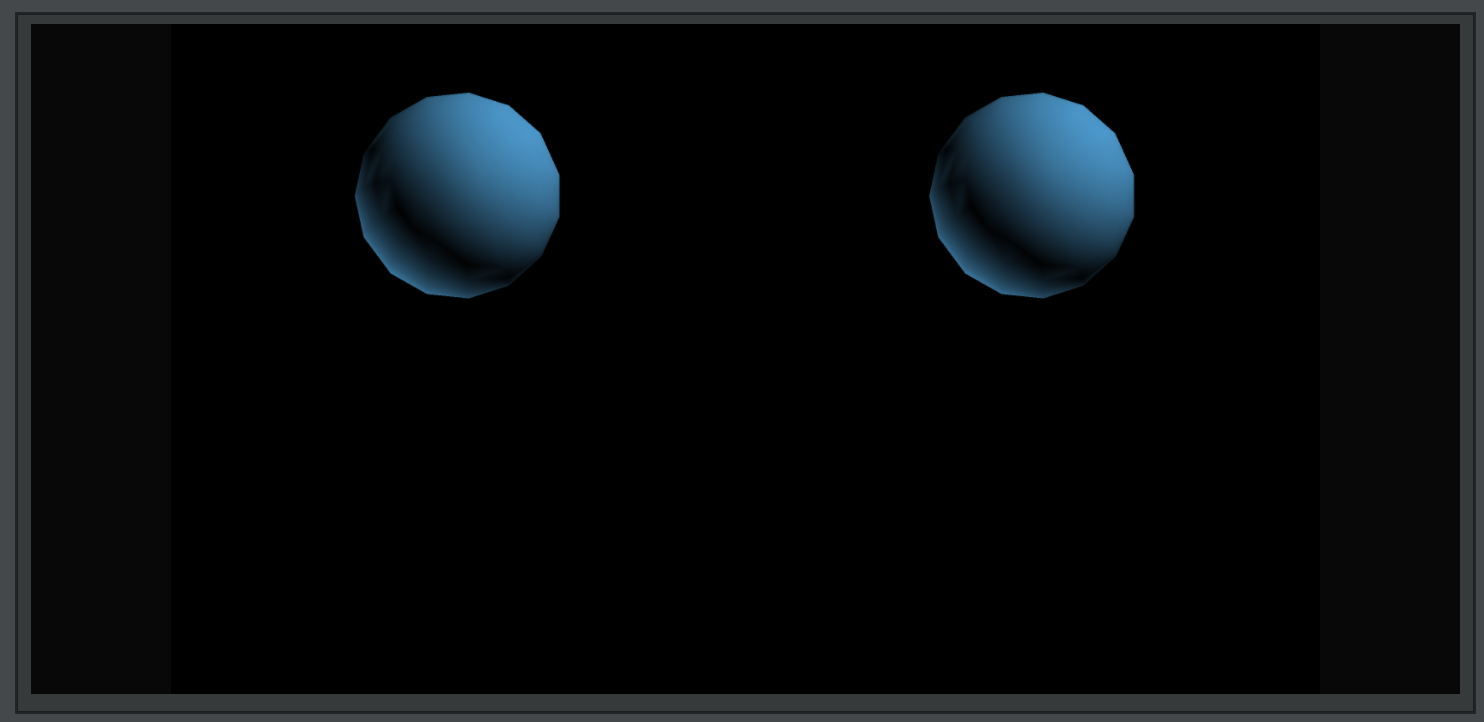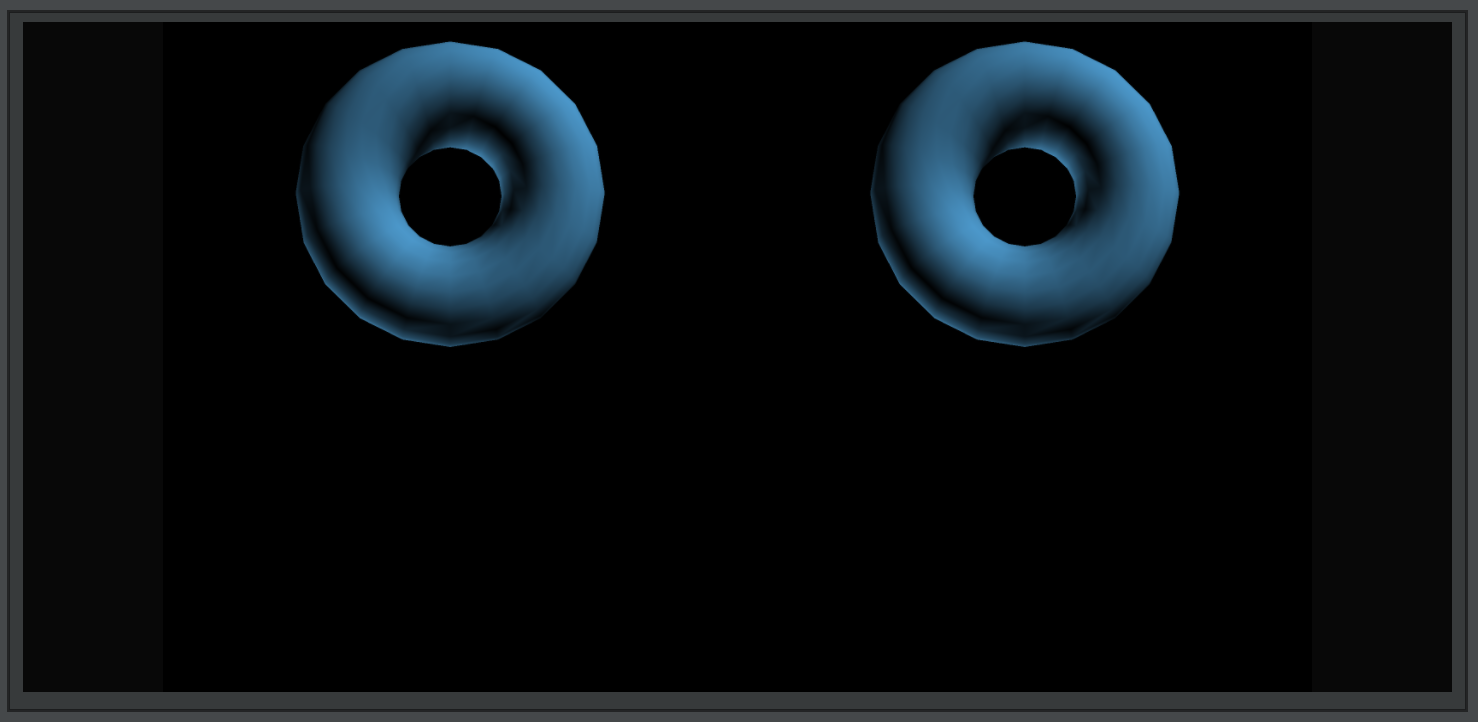
Full 3d Geometry
Much of Field and Field’s documentation is dedicated to making 2 and what you might call 2 and a half dimensional drawing. This is partly to provide an easy introduction to drawing with a computer, and partly due to the primacy of 2d drawing in general in art (canvases are flat). Obviously, everything is secretly 3D with FLines being turned into 3d lines, points and triangles. While the FLine representation of shapes as filled flat areas is flexible, sometimes you’d like the real thing. Recent versions of Field expose an interface to this real thing that fits into the Stage / layer framework. This interface is more complex, more laborious and more powerful than FLines alone.
Getting started
First, make a Stage of your choosing and make some code to make a layer on that stage:

var layer = _.stage.withName("some layer")
layer.vrDefaults()
// get a raw triangle builder
var myTriangles = layer.rawTriangles.myTriangles
myTriangles.open()
myTriangles.v(0.0,1.0,0)
myTriangles.v(0.5,1.0,0)
myTriangles.v(0.0,1.5,0)
myTriangles.close()
What do we see with this? Nothing! Why? Two reasons: First, while we’ve added three vertices using v(x,y,z) to the triangle builder we got from the layer, we haven’t added any actual triangles. Vertices and the triangles that cover them are separate things (you can see this when you think about drawing a sphere — many triangles connect to each of the vertices). Let’s add a triangle:
myTriangles.open()
myTriangles.v(0.0,1.0,0)
myTriangles.v(0.5,1.0,0)
myTriangles.v(0.0,1.5,0)
// here comes the triangle
myTriangles.e(0,1,2)
myTriangles.close()e(a,b,c) adds a triangle over the vertices a, b and c. The numbering scheme here is that 0 refers to the most recent vertex vertex added (here [0, 1.5, 0]) and 1 refers the the next-most recent added and so on. This seems backwards at first, but it allows you to write code here that is independent of whatever else might be in the builder already (maybe some other code has already put 100 vertices in the builder before this code runs — you’d have to change to .e(100,101,102) if the numbering scheme wasn’t this way). If we asked for a lineBuilder then we’d be saying things like .e(0,1) to make a line segment out of two vertices rather than a triangle.
What do we see now?

Still nothing. We haven’t set the color of the triangle. To do this, we need to add some extra information to the vertices:
myTriangles.open()
// set attribute '1' to be [0.4, 0.6, 0.9, 1]
myTriangles.aux(1, 0.5, 0.6, 0.9, 1)
myTriangles.v(0.0,1.0,0)
myTriangles.v(0.5,1.0,0)
myTriangles.v(0.0,1.5,0)
myTriangles.e(0,1,2)
myTriangles.close()This labels the first vertex as being a pale blue. Without any subsequent ‘aux’ commands, all other vertices end up with the same label.

Finally, a triangle. But why does aux 1 set the color? If you are intrigued see the documentation on shaders. This is where 1 gets meaning. You can set other channels of information (up to 16) and have them appear in your shaders.
We can set aux information on every vertex:
myTriangles.open()
myTriangles.aux(1, 0.5, 0.6, 0.9, 1)
myTriangles.v(0.0,1.0,0)
myTriangles.aux(1, 0.9, 0.6, 0.9, 1)
myTriangles.v(0.5,1.0,0)
myTriangles.aux(1, 0.5, 0.6, 0.0, 1)
myTriangles.v(0.0,1.5,0)
myTriangles.e(0,1,2)
myTriangles.close()Yields:

Note how the color is being interpolated across the face of the triangle.
Never doing that again!
Setting vertices by hand can get quite tedious. Two ways we avoid this: re-using existing code, and loading models from disk. Field comes with a rudimentary Ply file loader:
var PlyReaderToMesh = Java.type("trace.graphics.PlyReaderToMesh")
// ...
myTriangles.open()
new PlyReaderToMesh().load("/Users/marc/Desktop/yellowpoly.ply", myTriangles)
myTriangles.close()Here I’m using a broken yellow flower reconstruction curtesy of Tyler Araujo:

Alternatively Field has a repository of standard shapes:
myTriangles.open()
myTriangles.aux(1,0.3,0.6,0.8,1)
Shapes.sphere(1,15,10, myTriangles)
myTriangles.close()This draws a sphere (an approximation made, of course, out of, here, 15 slices of 10 circles of vertices). Sphere doesn’t set a color, so we have to do that up front (0.3, 0.6, 0.8, 1 is an opaque pale blue):

If we want this to be ‘lit’ then, as you might expect, we need to edit the shader. After exposing this layers (triangle) shader to this box using layer.bindTriangleShader(_) edit the vertex shader to include this declaration near the top:
// by convention Field uses aux(4, x, y, z) for normals
layout(location=4) in vec3 normal;And then near the bottom, modulate that vertex color by a ‘lighting equation’:
// a light coming in from direction '1,1,1'
float d = abs(dot(normal, normalize(vec3(1,1,1))));
vcolor = color;
vcolor.xyz *= d;
new Spheres() contains all kinds of other basic primitives. Shapes.torus(1,20,20,0.5, someTriangles) yields a torus:
